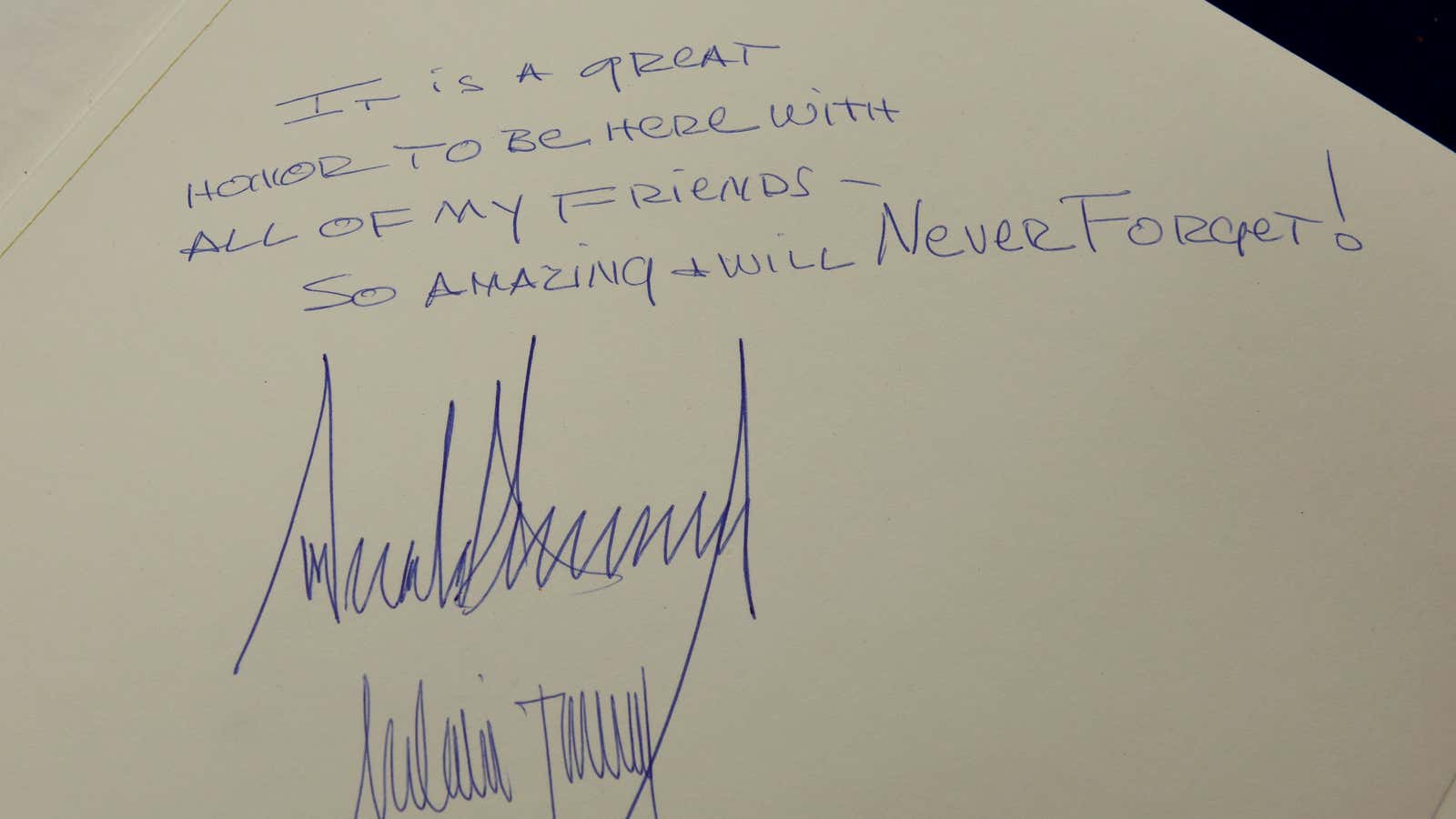You don’t have to be a good writer to write a great thank-you note.
There’s plenty of advice about the correct way to write letters of gratitude, but the best notes reject all templates and Victorian rules of etiquette. There’s no formula, no deadline, no format, and no word count for sincerity. I’ve sent and received thank-you’s in the form of a handwritten letter, an email, a doodle, a newspaper clipping, a long SMS message, and a video clip. I once received—and treasured—a thank-you note inscribed on a banana.
This week, a few keen-eyed critics pointed out a snapshot of Donald Trump’s inscription on the guestbook of Israel’s national Holocaust museum. In capital letters concluding with his laborious jagged signature, the US president wrote: IT IS A GREAT HONOR TO BE HERE WITH ALL OF MY FRIENDS — SO AMAZING & WILL NEVER FORGET!” Comparing him to his eloquent predecessor, critics lambasted Trump for not composing a more original sentiment on the fly.
Like most of us, Trump does keep on saying, writing and tweeting the same generic salutations. He used the same basic words again when he met with Pope Francis at the Vatican on May 25. ”For me it is a great honor to be here,” Trump said, lapsing to the familiar script. “Thanks, I will not forget what you have said to me.”
Any greeting is less special when it reeks of obligation. This happens a lot with dutiful birthday cards that get passed around in the office that everyone has to sign. I have been the recipient of such well-meaning cards, peppered with teeny tiny words like “great!” and “amazing” written by folks I barely know. And while I admire an office manager’s tenacity for circulating this “secret” card in a manila folder, the card itself usually goes straight into my drawer.
The blandest thank-you’s predictably come in beautiful packages, notoriously from newlyweds racing to respond to all the gifts they’ve received. (Etiquette dictates responding within 12 weeks.) A clear sign that the couple is working off a spreadsheet is when the note comes with an accounting of the item (or cash) received in coldly descriptive terms. (Thank you for the Vitamix 750 Heritage Professional Blender. We love it.) A thank-you note is a love letter, not a delivery confirmation receipt. FedEx will take care of that.
Here’s a simple way to say something sincere: When I’m stumped with what to say—and it happens—I turn away from my computer and mute all the emails, pings, texts to take a moment to think of only the person I’m writing to. I imagine what I would say to them if they were sitting next to me, or if we were talking on the phone. This could happen weeks after I receive a present. Pausing to think of the giver makes you appreciate your friendship, not just the object you received.
For some gifts, I’ve even ended up sending multiple notes, each time the present—a piece of music, a subscription, a dress, a sleeve of Jaffa Cakes—brought me happiness. Why not? Perhaps the dumbest convention in thank-you notes is the unspoken rule of only confessing your gratitude once.
